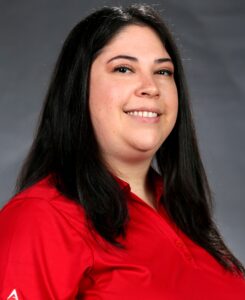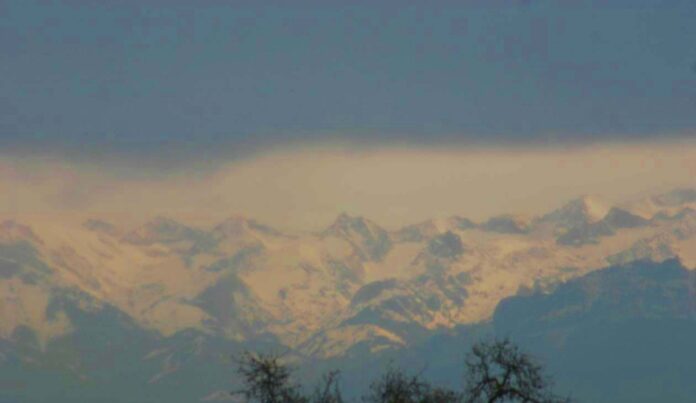 By Julissa Zavala
By Julissa Zavala
Record-breaking atmospheric rivers hit the state in January, and while that may cause some to rejoice and believe the drought is over, experts at the California Water Institute caution farmers and other water stakeholders about the impact of the storms.
“The way the water is coming, it’s like we’re taking huge gulps — like trying to put a pitcher of water through a straw,” said Laura Ramos, associate director for research and education at the California Water Institute. “There’s so much water in the pitcher and the straw is so thin that we’re not able to capture all the water. A lot of that water is running off to other areas and is not always percolating into the ground where we need it.”
Dr. Charles Hillyer, associate vice president for the California Water Institute, said surface water and groundwater can be seen as the state’s checking and savings account, respectively. The checking account is where water is withdrawn first, and when that gets too low, we dip into the savings account. How much money goes into that checking account depends largely on how much snow falls in the mountains, he said.
On Feb. 1st, the Department of Water Resources conducted the second snow survey of the season at Phillips Station, which recorded 85.5 inches of snow depth and a snow water equivalent of 33.5 inches, which is 193% of average for this location and date Statewide, the snowpack is 205 percent of average for that date, according to the survey.
Despite this good news, the Bureau of Reclamation announced its initial 2023 water supply allocations for Central Valley Project water users, and irrigation water service and repayment contractors south of the Delta were allocated just 35% of their contract total.
“When the snowpack is really good, people like to think that they’re going to get their full water allocation based on their water right,” Hillyer said. “When [farmers] plan on receiving a big dose of water and they don’t, that’s pretty painful for them.”
Water leaders agree that if this was a normal year with an abnormally high snowpack, they would be optimistic. California, however, rarely has an “average” or “normal” year and is in a constant state of peaking and dipping, Ramos said, going from extremely dry years to wet years, making it hard for farmers or irrigation districts to plan.
Many factors also affect the snowpack, including climate change, damage from forest fires and inadequate infrastructure.
Sargeant Green, a research scientist with the California Water Institute and Center for Irrigation Technology, said when fires occur in dense forests, they burn the trees that provide shade to the forest floor. That shade allowed snowmelt to gradually percolate into the soil. More exposed areas also allow for the evaporation of the water into the atmosphere from sunlight, he said.
Fires also cause organic materials to burn and turn into a wax-like substance that permeates the soil and prevents water from percolating into the ground, causing the water to run off quickly instead of getting down into the cracks that feed into the streams and storage reservoirs later in the water year, Green said.
California, one of only five Mediterranean climate regions in the world, is characterized by mild wet winters and warm and dry summers. The state’s infrastructure was made for a climate that was getting a lot more snow and longer winters.
Dr, Steve Blumenshine, interim executive director of CSU-WATER (Water Advocacy for Education and Research), said the infrastructure worked fine when the snowmelt was predominantly in May and June, because the climate during the summer is hot and dry — perfect growing conditions.
“The old system was great because the natural reservoir was that snowpack on the mountains,” Blumenshine said. “When that melted, we built all these reservoirs in the state and federal water projects to receive that and distribute it.”
Now, however, that snow is melting earlier in February or March due to warmer temperatures, and the crops that need that water during the summer aren’t able to get it, Blumenshine said.
Reservoirs do not just hold water for irrigation and cities, they are there to protect the Valley floor from flooding. Some experts are predicting that a greater proportion of mountain precipitation is going to be water, not snow, so holding water earlier in the year may be a risk.
“Do we want to store some of that water? Yes. Can we? Not always,” Ramos said. “Those reservoirs need to have that capacity and that empty space just in case there’s a huge melt.”
Water stakeholders from different sectors need to come together to figure out solutions, Green said. “We live in a different world now. In the last 20 years, the need for water operations to change has become dramatic. We’ve got to figure out better ways to do some of these things.”
The third snow survey of the season is scheduled to take place at Phillips Station on March 3rd. As the water year progresses, the Bureau of Reclamation said changes in hydrology, actions that impact operations, and opportunities to deliver additional water will influence future allocations.
Publisher’s note: DWR issued this statement after the article was submitted – “Although the statewide snowpack is currently just behind the record snow year of 1982-83, the snowpack varies considerably by region. The Southern Sierra snowpack is currently 209 percent of its April 1 average and the Central Sierra is at 175 percent of its April 1 average. However, the critical Northern Sierra, where the state’s largest surface water reservoirs are located, is at 136 percent of its April 1 average. With one month of the traditional wet season remaining, DWR is providing updated runoff forecasts to water managers and is closely monitoring spring runoff scenarios and river flows to ensure the most water supply benefits from this year’s snowpack while balancing the need for flood control.”
Julissa Zavala is the Grants and Contracts Facilitator and content writer with the California Water Institute and CSU-WATER. Ms. Zavala helps with researching, drafti ng, and submitting proposals that help the organizations receive grant funding. This funding advances CWI’s mission to engage the San Joaquin Valley, California, and the world with Fresno State’s faculty, staff, and students to pursue current and sustainable water resource management solutions through education, collaboration, and research. Ms. Zavala has a background in journalism and spent several years as a reporter at local Central Valley newspapers.
ng, and submitting proposals that help the organizations receive grant funding. This funding advances CWI’s mission to engage the San Joaquin Valley, California, and the world with Fresno State’s faculty, staff, and students to pursue current and sustainable water resource management solutions through education, collaboration, and research. Ms. Zavala has a background in journalism and spent several years as a reporter at local Central Valley newspapers.
DISCLAIMER OF RESPONSIBILITY; Waterwrights.net strives to provide its clients with the most complete, up-to-date, and accurate information available. Nevertheless, Waterwrights.net does not serve as a guarantor of the accuracy or completeness of the information provided, and specifically disclaims any and all responsibility for information that is not accurate, up-to-date, or complete. Waterwrights.net’s clients therefore rely on the accuracy, completeness and timeliness of information from Waterwrights.net entirely at their own risk. The opinions expressed in this report are those of the author and do not represent any advertisers or third parties.
ALL RIGHTS RESERVED. Copyright 2023 by WaterWrights.net


































